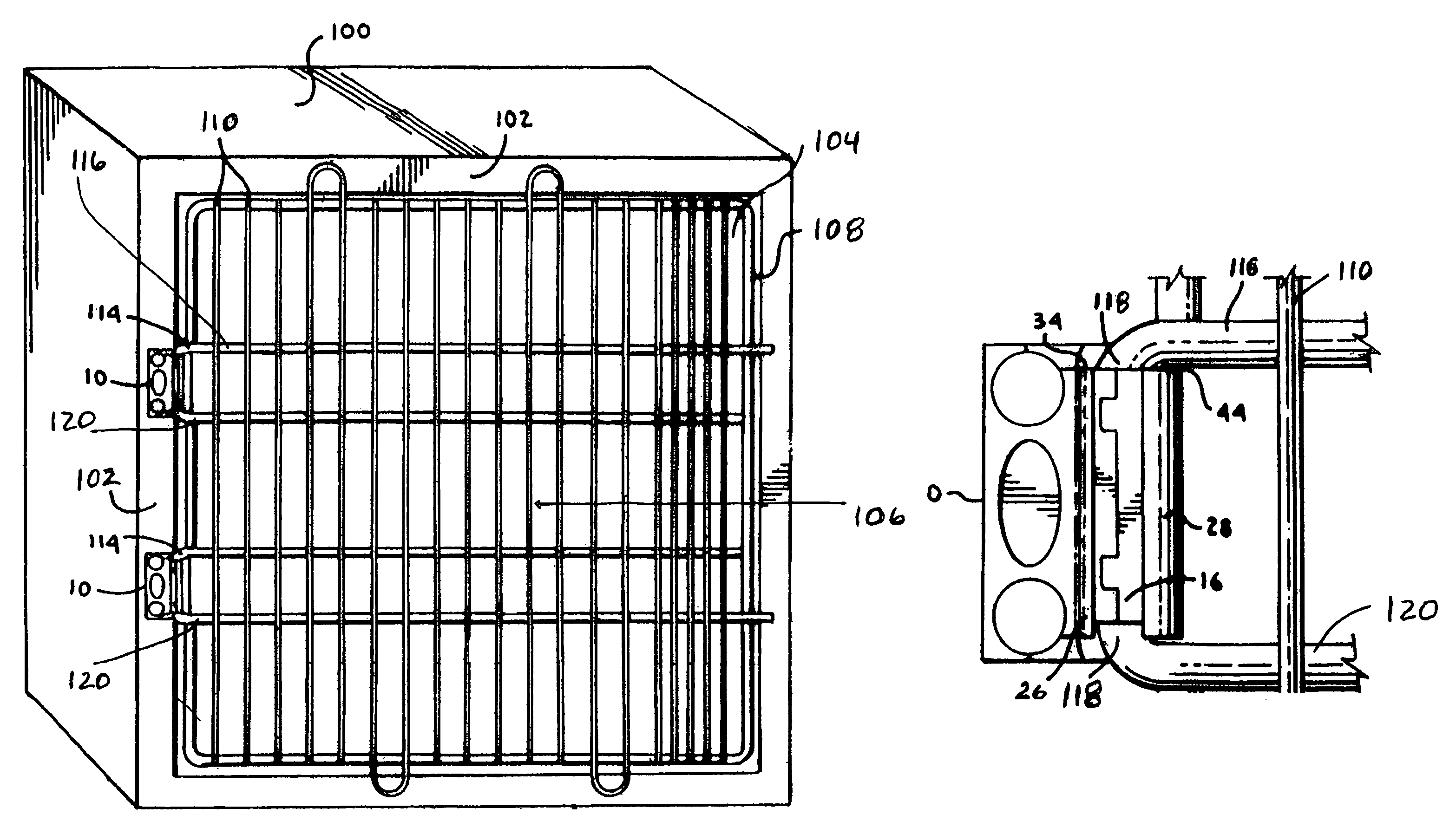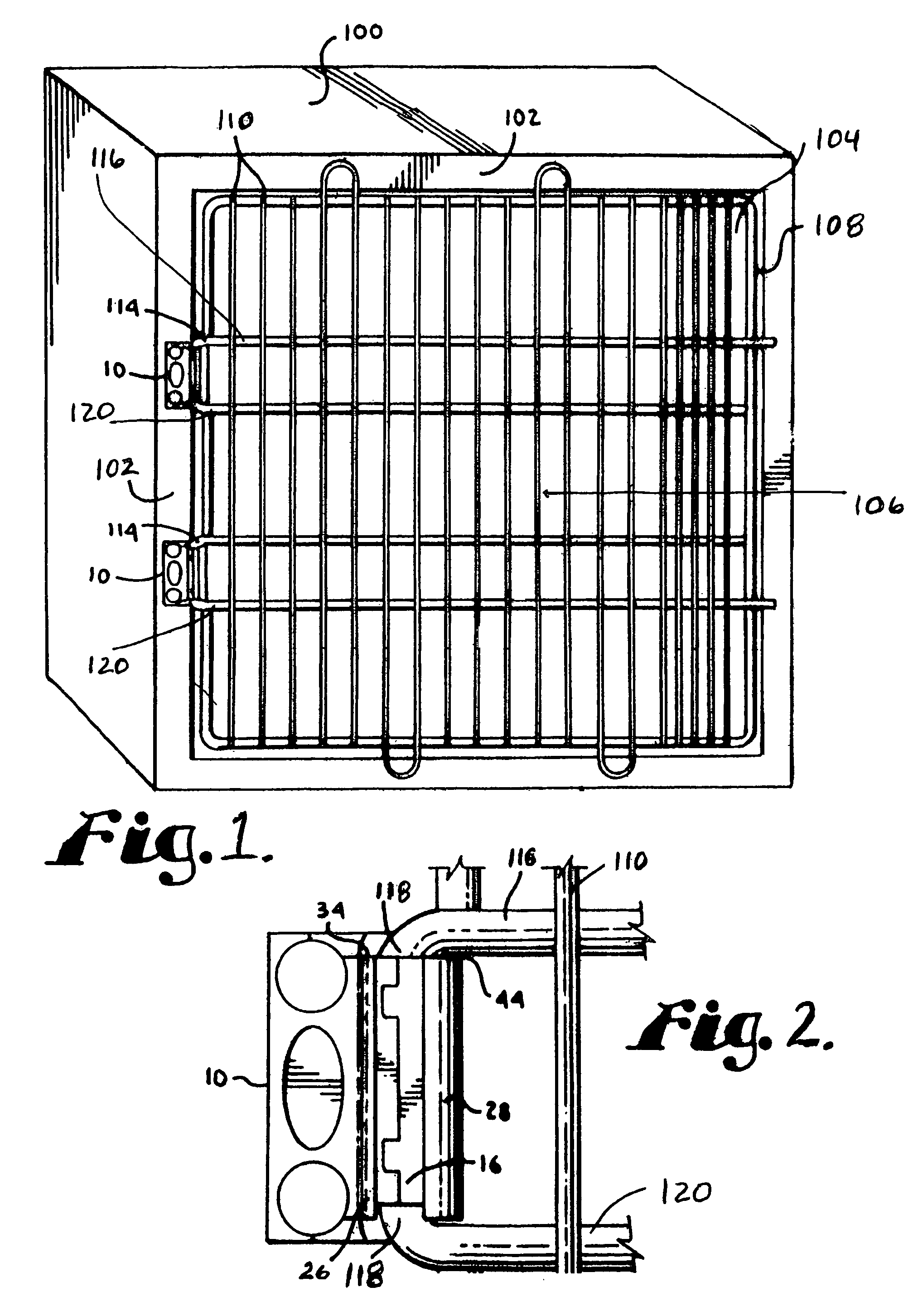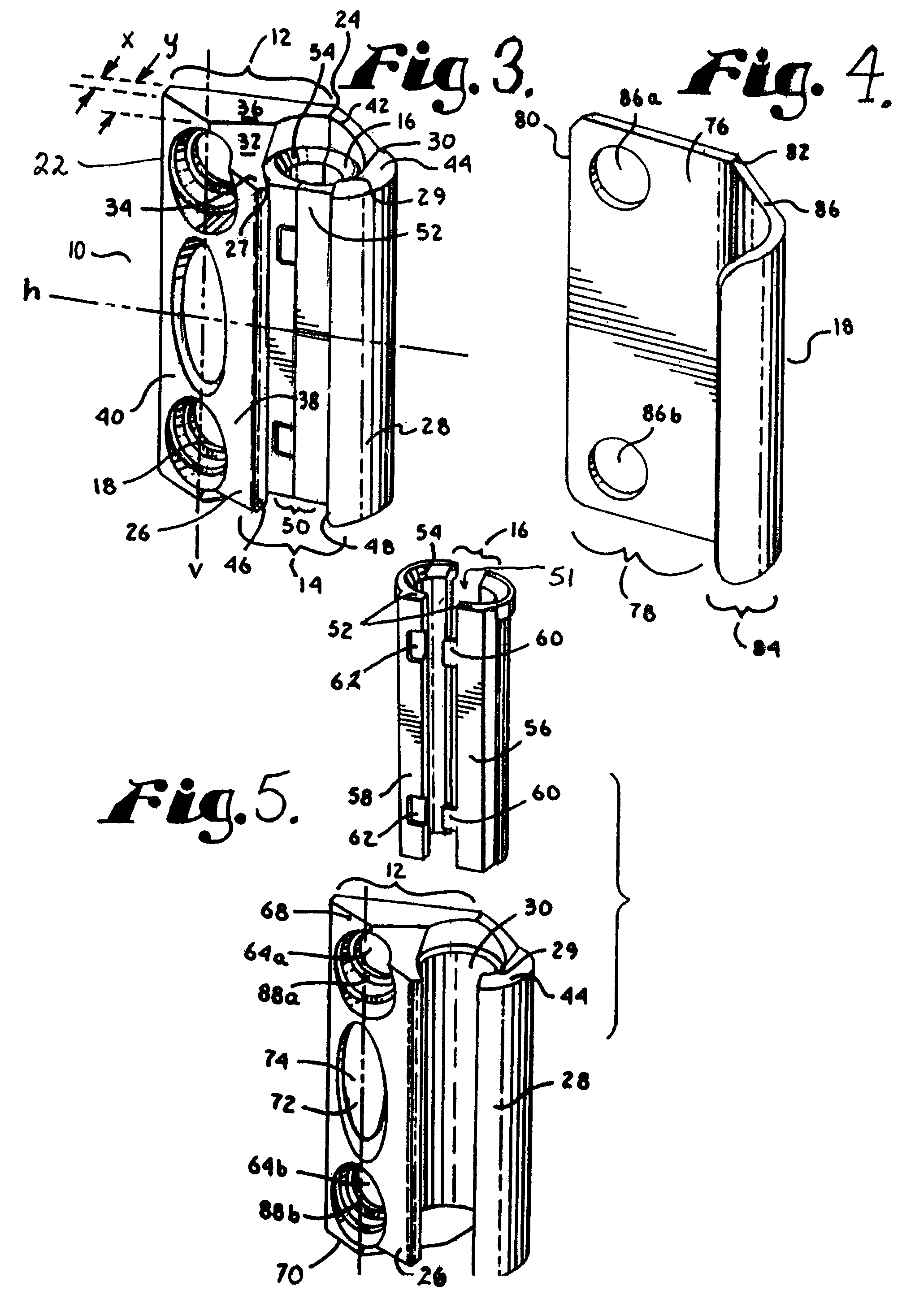Reversible door with integral pivot pin
a technology of pivot pin and hinge, which is applied in the field of doors, can solve the problems of unfulfilled problems, hindered smooth hinge operation, and unwanted noise, and achieve the effect of convenient and convenient manual operation
- Summary
- Abstract
- Description
- Claims
- Application Information
AI Technical Summary
Benefits of technology
Problems solved by technology
Method used
Image
Examples
Embodiment Construction
[0022]A door assembly in accordance with an exemplary embodiment of the present invention is depicted in FIGS. 1 through 7. While the invention will be described in detail hereinbelow with reference to this exemplary embodiment, it should be understood that the invention is not limited to the specific configuration shown in this embodiment. Rather, one skilled in the art will appreciate that a variety of configurations may be implemented in accordance with the present invention.
[0023]Looking to FIGS. 1 and 2, an animal cage 100 includes a front wall 102 having an opening 104 over which door 106 is pivotally mounted such that door 106 may be pivoted from a closed position (as shown) to an open position (not shown) to enable access to the interior of the cage. Door 106 is connected to the cage by two hinges 10 secured on the left side of the cage adjacent the opening. Door 106 is comprised of an outer frame 108 formed of metal rod sized and configured to correspond and fit within the ...
PUM
 Login to View More
Login to View More Abstract
Description
Claims
Application Information
 Login to View More
Login to View More - R&D
- Intellectual Property
- Life Sciences
- Materials
- Tech Scout
- Unparalleled Data Quality
- Higher Quality Content
- 60% Fewer Hallucinations
Browse by: Latest US Patents, China's latest patents, Technical Efficacy Thesaurus, Application Domain, Technology Topic, Popular Technical Reports.
© 2025 PatSnap. All rights reserved.Legal|Privacy policy|Modern Slavery Act Transparency Statement|Sitemap|About US| Contact US: help@patsnap.com



